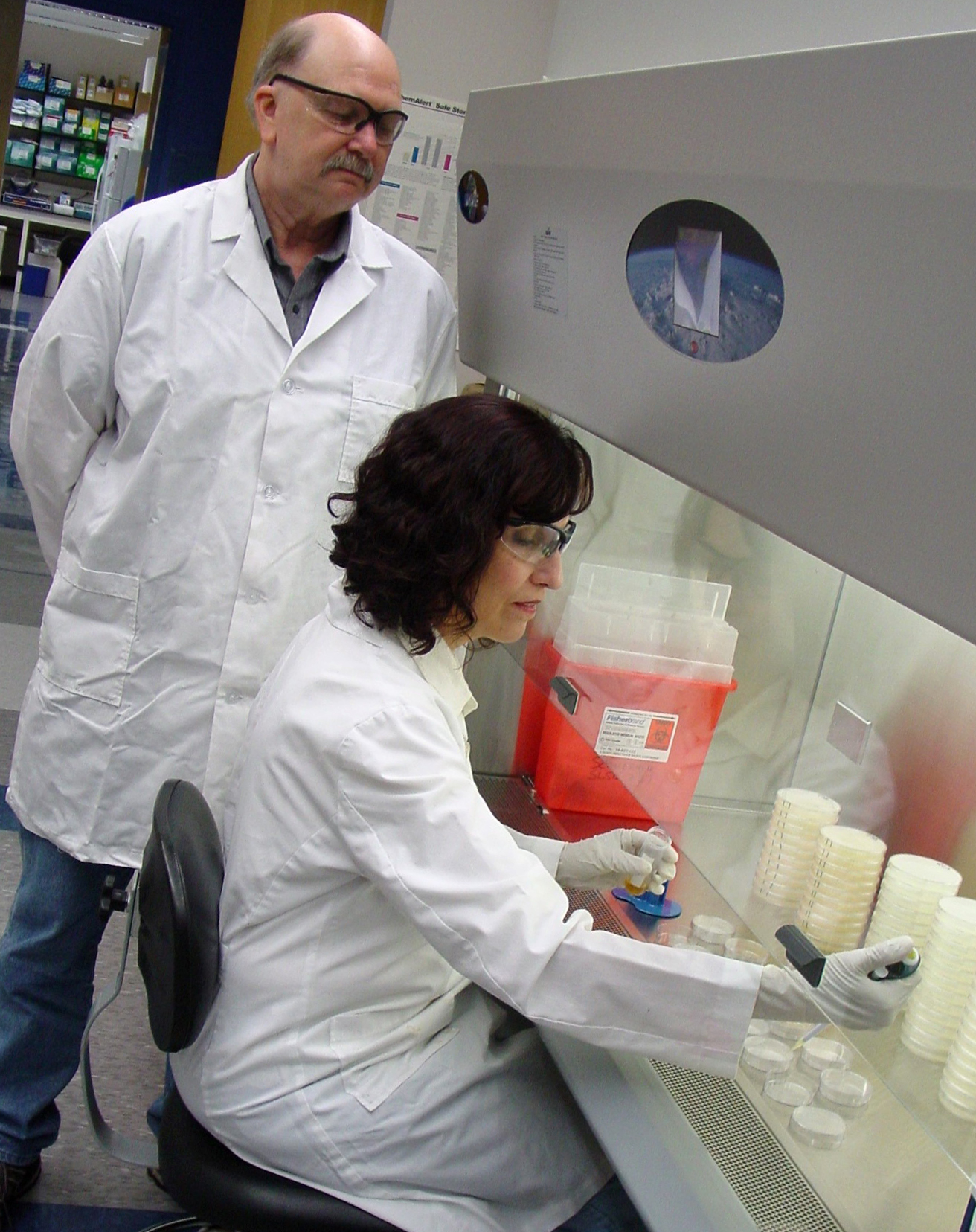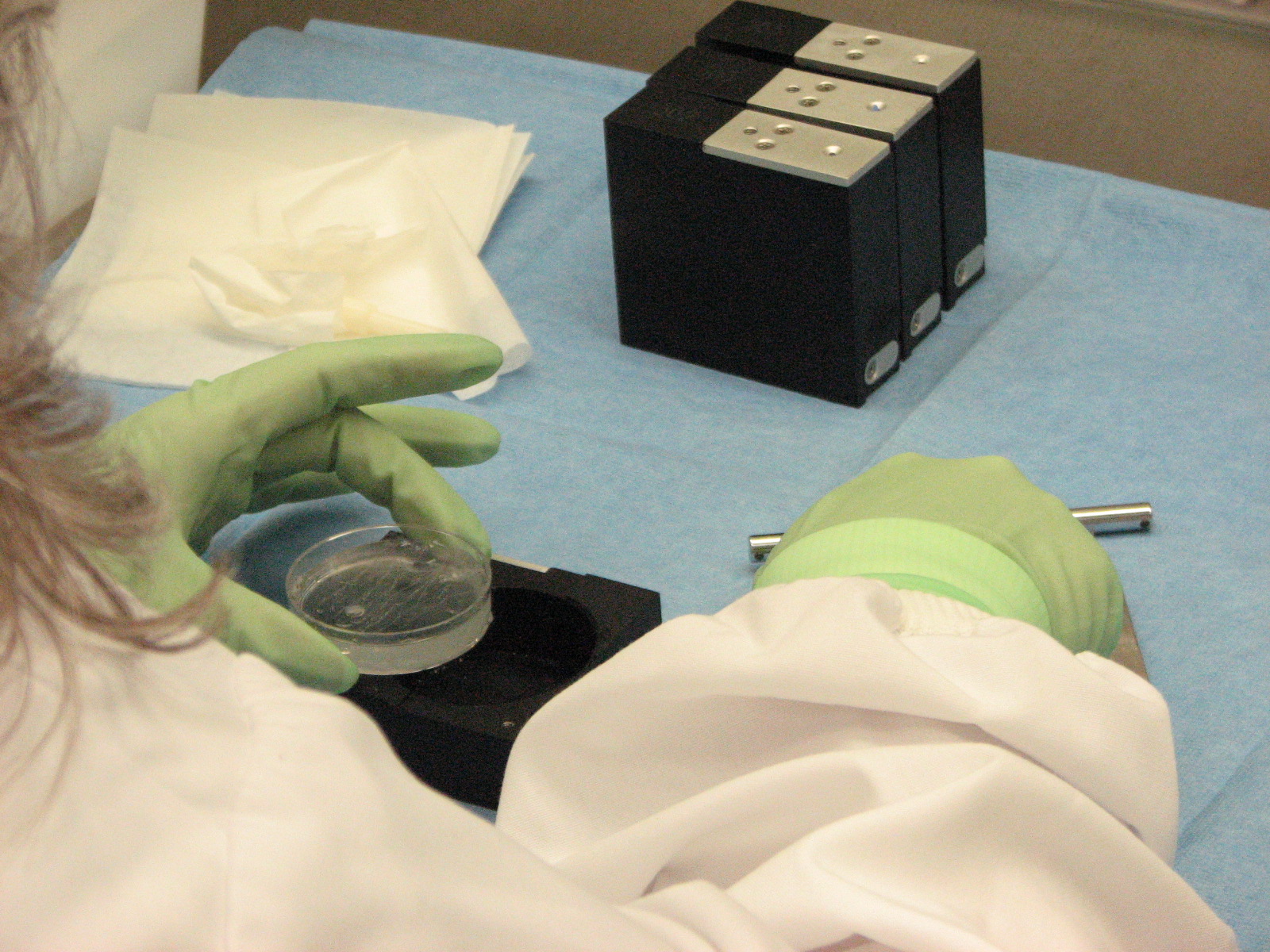By Anna Heiney
NASA’s Kennedy Space Center, Florida
A four-pack of bread box-sized containers will carry high-flying science to the International Space Station on the sixth commercial resupply services flight aboard a SpaceX Dragon spacecraft launching on a Falcon 9 rocket.
The specimens for the BRIC-21 payload moved from NASA Kennedy Space Center’s Space Life Sciences Laboratory to the Space Station Processing Facility (SSPF) just two days before launch, scheduled for April 13. There Petri dishes holding Bacillus subtilis and Staphylococcus epidermidis bacteria are carefully packed into Biological Research in Canisters (BRIC) containers in preparation for the ride into orbit aboard SpaceX’s Dragon.
The space station serves as an out-of-this-world laboratory with Earth benefits. This investigation will analyze the microbes to identify the suite of stress responses exposure to spaceflight induces and determine viability, resistance levels to a battery of antibiotics, and rates of spontaneous mutation to antibiotic resistance.
Science payloads such as BRIC that are bound for the space station are prepared for flight at Kennedy in laboratories inside the SSPF. NASA and Vencore engineers and technicians enclose the specimens inside petri-dish fixation units, which in turn are installed inside the BRIC containers.
“A total of 20 specimens are flying, so that means 10 specimens of each,” explained David Flowers, a payload manager with the International Space Station Ground Processing and Research Project Office at Kennedy. “Every canister will carry a mix of specimens, so in case something happens to one, we won’t lose all of one type of specimen.”
For example, Canister A will carry three Bacillus subtilis and two Staphylococcus epidermidis specimens. Canister B will contain three Staphylococcus epidermidis and two Bacillus subtilis. The pattern will repeat for Canisters C and D, and in all four, the sixth slot will house a temperature logger that keeps a running record of the temperatures the specimens encounter throughout the study.
BRIC-21 is the latest in a series of similar payloads that have made the journey from the Florida spaceport to the orbiting laboratory.
The University of Florida previously sent Bacillus subtilis and Staphylococcus epidermidis to the station as a part of the BRIC-18 payload, which flew in April 2014. The second part of that payload was BRIC-18-2, in which Michigan State University in East Lansing, Michigan, focused on how Arabidopsis thaliana plant seeds grew and managed to survive the stresses of the space environment.
Arabidopsis thaliana seeds also flew on BRIC-19 in September 2014 and on BRIC-20 in January 2015.
The Space Biology program within the Space Life and Physical Sciences Research and Applications Division at NASA Headquarters sponsors these investigations.
Long before it’s time to fly, two important preflight tests serve as scientific dress rehearsals, providing an opportunity to ensure the study has the best chance of success once it reaches the station.
The science verification test is first, in which lab personnel conduct the experiment according to the profile outlined by the principal investigator.
“The principal investigator is responsible for establishing the test profile,” Flowers explained. “How many days in cold storage before we start the growth test? How long before we inject it with growth solution, and how long after that until we stop the experiment?”
“The experiment verification test, or EVT, is when we simulate the entire timeline and all the expected environmental conditions, mainly temperature,” Flowers said.
The test covers every step of the study, from the time the specimens are integrated with the flight hardware to the payload’s return to Kennedy after the Dragon lands in the Pacific Ocean after about five weeks, at the end of the mission.
After the flight, the BRIC payload will be returned to Kennedy, where the specimens will be removed from their containers and handed over to scientists for analysis.
The SSPF houses the International Space Station Environmental Simulator, which allows the same experiment to be conducted on the ground as a control.
“Typically, we conduct a ground control test two days behind the on-orbit activities,” Flowers said. “This time, Dr. Wayne Nicholson, the principal investigator, wants to get all the hardware back and download the temperature data from the loggers that are included in the hardware, so we can run the environmental chambers to those exact temperature profiles.”
The team had to work hard to prepare BRIC-21 for flight, Flowers said.
“While the team was working the on-orbit mission for BRIC-20, they were down here conducting the EVT for BRIC-21,” he explained.
“The team really came together for parallel processing,” he said. “That’s something special.”




























